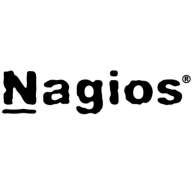

Nagios XI and SolarWinds AppOptics compete in the network and application monitoring category. SolarWinds AppOptics seems to have an upper hand for users seeking advanced application performance management with less complex setup and operation.
Features: Nagios XI offers network service monitoring, real-time alerts, and plugin support. It suits environments looking for customization and handles broad monitoring needs. SolarWinds AppOptics provides application performance management, topology discovery, and network performance analysis, offering a more unified performance monitoring experience.
Room for Improvement: Nagios XI needs simpler setup, better clustering capabilities, and improved integration with external systems. Users want an intuitive dashboard and a modernized user experience. SolarWinds AppOptics requires better cloud integration, centralized control over distributed applications, and simpler licensing. Enhancements in integration with third-party tools are also needed.
Ease of Deployment and Customer Service: Nagios XI offers deployment flexibility with on-premises and private cloud options but requires complex initial setup. The community provides significant support. SolarWinds AppOptics has a streamlined installation process and offers professional customer assistance, ensuring effective response to inquiries.
Pricing and ROI: Nagios XI is cost-effective due to its open-source core, and the commercial version's perpetual licensing model is valuable in many cases. SolarWinds AppOptics uses element-based pricing, considered reasonable and aligned with its comprehensive capabilities. While Nagios XI might deliver quicker ROI with its open-source elements, SolarWinds AppOptics offers competitive pricing for full-spectrum features.


Nagios XI provides monitoring of all mission-critical infrastructure components, including applications, services, operating systems, network protocols, systems metrics, and network infrastructure. Third-party add-ons provide tools for monitoring virtually all in-house and external applications, services, and systems.
Nagios XI uses a powerful Core 4 monitoring engine that provides users with the highest levels of server monitoring performance. This high degree of performance enables nearly limitless scalability and monitoring powers.
With Nagios XI, stakeholders can check up on their infrastructure status using the role-based web interface. Sophisticated dashboards enable access to monitoring information and third-party data. Administrators can easily set up permissions so users can only access the infrastructure they are authorized to view.
Nagios XI Benefits and Features
Some of the benefits and top features of using Nagios XI include:
Reviews from Real Users
Nagios XI stands out among its competitors for a number of reasons. Several major ones are its integration options and monitoring abilities, as well as its alerting features.
David P., a senior DevOps engineer at EML Payments Ltd, writes, “We use Nagios as a network discovery tool. We use Nagios to maintain our uptime statistics and to monitor our services. It has allowed us to be much more sophisticated in our monitoring and alerting.”
An IT-OSS manager at a comms service provider notes, “Nagios XI has a custom API feature, and we can expose custom APIs for our integration. This is a great feature.”
AppOptics is a SaaS-based simple, powerful and affordable Infrastructure & Application monitoring for custom on-premises, cloud, and hybrid systems.
Your business runs on applications, and when they go down or run slowly, it can impact the business in lost productivity, customers, or revenue. To add to the complexity, your IT environment is changing, and workloads can be spread across data centers, and cloud resources. You need to monitor the availability and performance of applications and infrastructure, regardless of where they are, so you can identify potential issues early and address them before they impact users
We monitor all IT Infrastructure Monitoring reviews to prevent fraudulent reviews and keep review quality high. We do not post reviews by company employees or direct competitors. We validate each review for authenticity via cross-reference with LinkedIn, and personal follow-up with the reviewer when necessary.